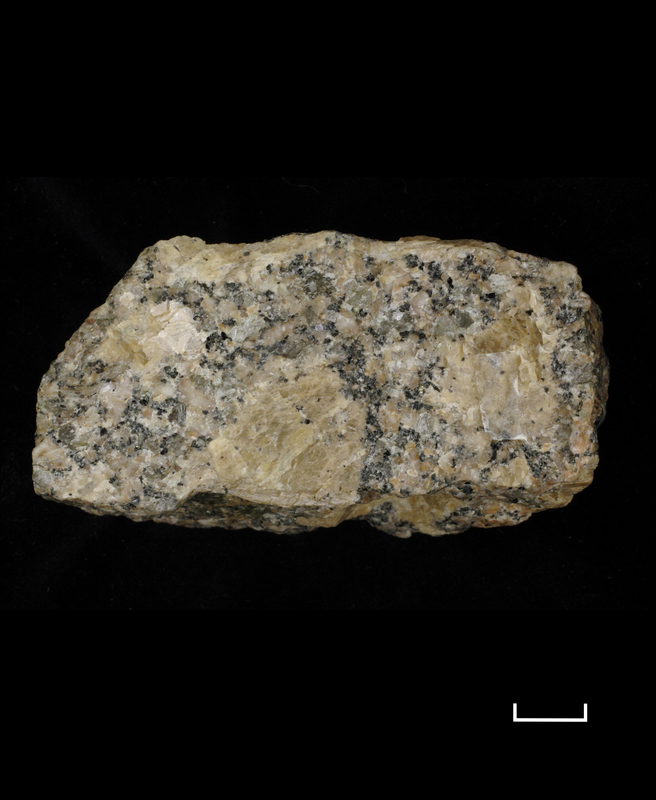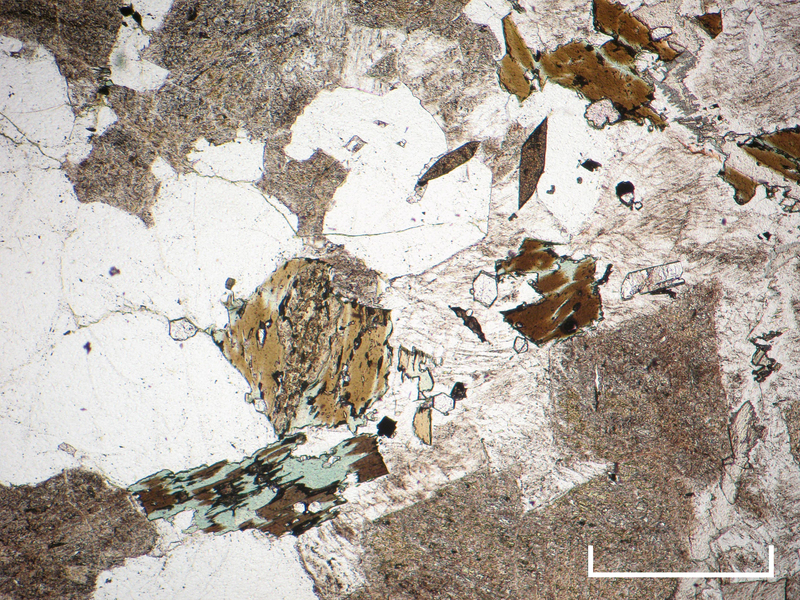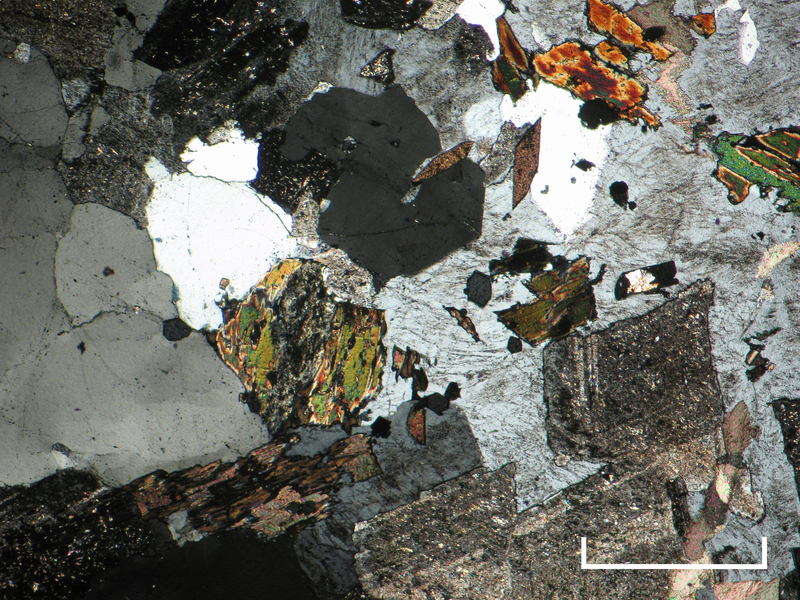- Home
- Rocks
- Type fossils
- Fossil Specimens
- Minerals
- Glossary
- Stratigraphic Chart
- Michel-Levy Chart
- Classification of igneous rocks
- University of Cambridge
- Department of Earth Sciences
- ESC Library
- Moodle
- Sedgwick Museum
- DoITPoMS
- Mindat.org
- Microfossils
- Bryozoans
- Webmineral
- Tree of Life
- CrystalMaker
- Virtual Microscope
L101 Granite
Title
L101
Granite
Subject
Age
Caledonian, DevonianLocation
Shap Fell, CumbriaDescription
Hand Specimen
Coarse-grained, porphyritic texture.
Phenocrysts of pink feldspar, 10-30 mm long, tabular, display clear cleavage planes.
Groundmass of coarse-grained white feldspar, pink feldspar, quartz and biotite.
Quartz grains are anhedral and display their characteristic conchoidal fracture and vitreous lustre.
Thin-section
Alkali feldspar (orthoclase)
- Pink phenocrysts up to ~10 mm long, relatively fresh (unaltered).
Groundmass
- Feldspar (both plagioclase and alkali) grains 1-4mm long, mainly subhedral, though some are quite lath shaped. Partially altered. The plagioclase grains display their characteristic lamellar twinning.
- Biotite grains (0.5-2 mm) with subhedral to anhedral form. Grains have ragged edges and are partially altered to chlorite, mainly along cleavage planes.
- Quartz grains (typically 2-5 mm) contain lots of tiny inclusions and display undulose extinction.
Accessory minerals
- Sphene
- Apatite
- Opaque mineral
Rock History
Porphyritic texture means this rock underwent two stages of cooling; phenocrysts crystallised first followed by the groundmass. The groundmass is coarse-grained, and must have crystallised slowly as part of an intrusion.
Plagioclase and alkali feldspar both occur in this rock, indicating that it formed at high pressures.
Granitic composition (essential quartz and feldspar) indicates that it was produced in a continental setting. Late-stage alteration.
Advanced Notes
This rock is classified as an adamellite because it contains roughly equal proportions of alkali feldspar and plagioclase feldspar, as well as biotite and quartz.
Rock Name
granite
adamellite
Citation
“L101
Granite,” 1A Collections, accessed April 9, 2024, https://wserv3.esc.cam.ac.uk/p1acollections/items/show/2.
Granite,” 1A Collections, accessed April 9, 2024, https://wserv3.esc.cam.ac.uk/p1acollections/items/show/2.



